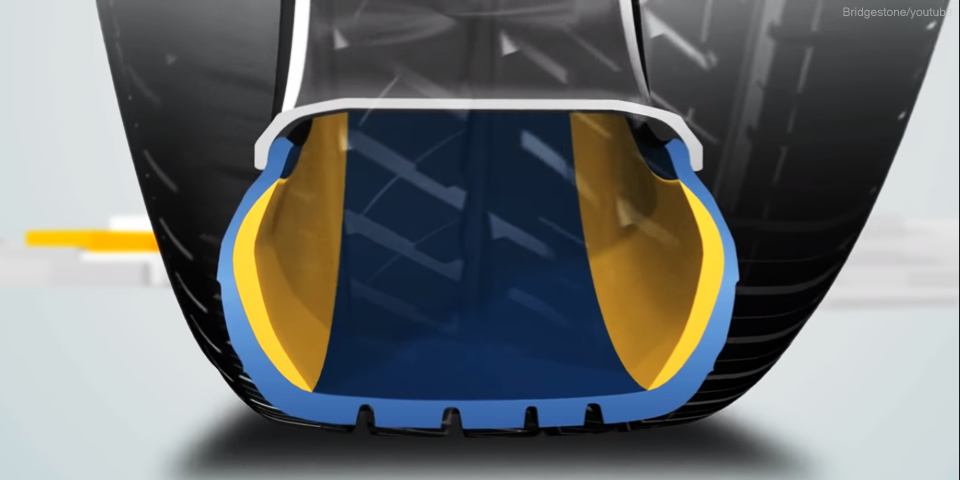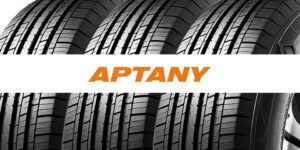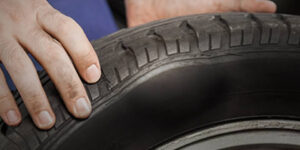Are Run-Flat Tires Repairable?
Are run-flat tires repairable? It depends on various factors and should be evaluated on a case-by-case basis. Read more!

Are run-flat tires repairable? It’s a question that many drivers ask when faced with the possibility of a flat tire on the road. In this post, we will explore the topic of run-flat tires and delve into the question of whether they can be repaired or not.
Imagine you’re on a road trip, enjoying the scenic views and the open road. Suddenly, you feel a telltale thud and your vehicle starts to wobble. You pull over to the side of the road and discover that you have a flat tire. Panic sets in, but then you remember that you have run-flat tires. The question now is, can you repair it and continue on your journey?
Run-flat tires have become increasingly popular in recent years. They are designed to perform even when deflated, allowing you to continue driving for a limited distance at a reduced speed. This innovative feature provides peace of mind and eliminates the need to change a tire on the side of a busy highway or in dangerous weather conditions.
However, run-flat tires come with their own set of considerations. Unlike traditional tires, which can often be repaired with a simple patch, run-flat tires require special attention. The reinforced sidewalls and internal structures that give them their run-flat capabilities also make them more difficult, and sometimes even impossible, to repair.
Must Read:
- What Does 91w Mean on a Tire
- Why is it Important to Rotate Car Tires?
- Do Tires Deflate in Hot Weather?
- How to Loosen Tire Screws?
- What Causes Rear Tire Warping?
Why you should avoid repairing run-flat tires
When it comes to run-flat tires, there are some clear reasons why attempting to repair them is not recommended. While it may be tempting to save some money by opting for a repair instead of a replacement, doing so can have serious consequences.
One of the main dangers of repairing run-flat tires is the compromised integrity of the tire itself. Run-flat tires are specifically designed to support the weight of a vehicle, even when deflated. The reinforced sidewalls and internal support structures are crucial for maintaining stability and preventing a blowout. When a run-flat tire is punctured, these components can be damaged, making it unsafe to repair and put back into service.
Furthermore, run-flat tires often have unique features and technologies that make them different from regular tires. For example, many run-flat tires have a stiffer construction and a different tread pattern to accommodate the added weight and provide additional grip during a deflated state. Repairing such tires may compromise these specialized features, resulting in a decrease in performance and safety.
In addition to the structural concerns, attempting to repair a run-flat tire can also be a time-consuming process. Repairing regular tires is relatively straightforward, involving the patching or plugging of small punctures. However, with run-flat tires, the process can be more complex and require specialized equipment and expertise. This means more time spent at the tire repair shop and potentially higher costs.
In summary, the risks and dangers associated with attempting to repair run-flat tires outweigh the benefits. It is best to consult with a professional and follow the manufacturer’s recommendations for tire replacement. By doing so, you can ensure the safety and performance of your vehicle while avoiding any potential mishaps on the road.

The best alternative to repairing run-flat tires
The best alternative to repairing run-flat tires When faced with a run-flat tire that cannot be repaired, there is a better solution than attempting to fix it. That solution is to replace the tire with a new one. While it may require a bit more investment upfront, it is a safer and more reliable alternative in the long run.
One of the main advantages of replacing a run-flat tire rather than repairing it is the assurance of having a fully functional and reliable tire on your vehicle. By opting for a new tire, you can ensure that all of its components are intact and in optimal condition. This means that you can trust the tire’s performance and reliability, allowing you to drive confidently without the worry of a potential tire failure. Additionally, replacing a run-flat tire gives you the opportunity to assess your tire needs and make any necessary adjustments.
For example, if you have been using a run-flat tire that didn’t provide the desired ride comfort, you could now choose a regular tire that offers a smoother and more comfortable driving experience. Alternatively, if you frequently drive long distances or in remote areas, you could opt for a tire with superior durability and tread life. Ultimately, choosing to replace a run-flat tire instead of repairing it offers peace of mind and the chance to tailor your tire choice to meet your specific needs.
Remember, safety should always be the top priority when it comes to your vehicle and its tires. Investing in a new tire is a worthwhile investment that ensures your safety and the performance of your vehicle on the road.
How to properly maintain run-flat tires
How to properly maintain run-flat tires To effectively care for and prolong the lifespan of your run-flat tires, it’s important to follow a few key maintenance steps. By incorporating these practices into your routine, you can ensure optimal performance and durability.
Step 1: Regularly inspect your tires. Start by visually checking your run-flat tires for any signs of damage such as cuts, bulges, or punctures. Additionally, pay attention to the tread depth and look for any signs of uneven wear.
Step 2: Maintain proper tire pressure. Run-flat tires rely on maintaining the correct tire pressure to function optimally. Use a tire pressure gauge to check the pressure regularly and ensure it matches the recommended levels specified by the tire manufacturer.
Step 3: Rotate your tires. To promote even wear and extend the overall lifespan of your tires, it’s recommended to have them rotated periodically. This means swapping the front tires with the rear ones to distribute the wear evenly across all tires.
Step 4: Avoid overloading your vehicle. Just like any other type of tire, run-flat tires have weight limits. Be mindful of the maximum load capacity specified by the tire manufacturer and avoid exceeding it. Overloading your vehicle can put excessive strain on the tires, leading to accelerated wear and potential damage.
Step 5: Drive sensibly. Your driving habits can significantly impact the longevity of your run-flat tires. Avoid aggressive driving maneuvers and sudden braking, as they can put excessive stress on the tires. Additionally, be cautious when driving over potholes or other road hazards, as they can cause damage to the tires.
Step 6: Schedule regular tire alignments and balancing. Ensuring that your run-flat tires are properly aligned and balanced can help prevent uneven wear and promote a smooth ride. Regularly visit a trusted tire technician for these services as part of your maintenance routine.
By following these steps and incorporating them into your routine, you can effectively care for your run-flat tires and prolong their lifespan. Remember that proper maintenance is key to keeping these specialized tires in top condition and ensuring your safety on the road.

The future of run-flat tires
The future of run-flat tires The repairability of run-flat tires has always been a topic of discussion and concern for drivers. While repairing run-flat tires is currently not recommended due to the risks and compromised integrity, there are emerging technologies and developments that hold promise for improving the repairability of these tires in the future. One such advancement is the development of self-healing tire technology.
This innovative approach involves incorporating special materials or compounds into the tire that can automatically fill in punctures or small leaks, effectively repairing the damage without the need for external intervention. Imagine having a run-flat tire that can repair itself on the go, eliminating the need to stop and change a tire or seek repairs immediately. This technology, still in early stages, shows great potential for enhancing the repairability of run-flat tires and providing a more convenient and reliable solution for drivers. Another area of development focuses on the construction and design of run-flat tires.
As tire manufacturers continue to innovate, they are exploring ways to improve the overall durability and repairability of these tires. This includes advancements in sidewall reinforcements, tread patterns, and compounds that would make run-flat tires more resistant to punctures and damages. These developments aim to make run-flat tires more repair-friendly in the future, allowing for safer and more cost-effective repair options.
While the repairability of run-flat tires is not currently recommended, it’s encouraging to see advancements on the horizon that may one day alleviate these concerns and provide more options for drivers facing tire issues on the road. As tire technology continues to evolve, we can expect improvements in the repairability of run-flat tires, making them an even more reliable and convenient choice for drivers.










